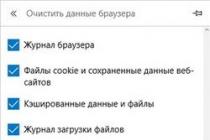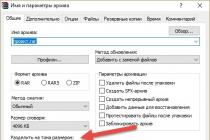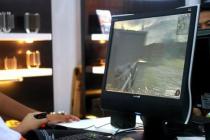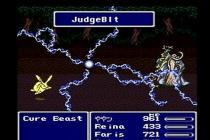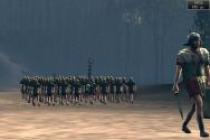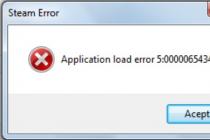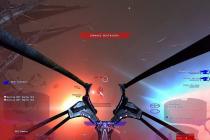LPD - Low Power Device - low power device.
PMR - Personal Mobile Radio - Personal Mobile Radio.
Hence, the LPD / PMR range is a frequency range specially allocated for the operation of low-power radio stations for individual use.
Registration of LPD/PMR radio stations is not requiredWhat is it for?
Various bands of the radio frequency spectrum are used by civil, military, special, commercial and other services that provide human life. Separate frequency ratings or small bands may, for one reason or another, not satisfy official or commercial needs, but quite suit amateur or private ones. These ranges are open for general use.
The LPD/PMR range is in common use in Russia relatively recently, coinciding with the European range of similar use. Despite the fact that the power of radio stations allowed for use is significantly limited, the location in the upper part of the VHF, which means that the good penetrating ability of the radio waves of the range, makes it possible to successfully use it for communication in urban areas. Industrial interference does not have a strong effect on this part of the radio spectrum. And in conditions of work in open areas, the communication range increases significantly due to the lack of buildings at all.
69 channels of frequency band
LPD (433.075-434.775 MHz)

8 channels frequency range
PMR (446.00625-446.09375 MHz)

What is CTCSS and DCS:
These are subtones that are mixed into the transmitter signal. They are not distinguishable by ear, but the tone squelch in the station (if any) distinguishes them and opens only to the tone that you set. For example, you communicate with a correspondent, and builders start working on the same frequency: you just close the noise reduction tone and you no longer hear the builders (but everyone can hear you), they no longer interfere with you.


How is CTCSS different from DCS?
CTCSS are simply sinusoidal tones mixed to the transmitted signal.
DCS - tone signals formed from digital sequences.
To the ear, both sound a little different, but it's still low-frequency noise mixed with your voice on the air.
Follow the news in our Vkontakte group
Two cars is a company, and three is already a column. And the more participants, the more difficult it is to coordinate. The question of operational and reliable communication is acute. It would seem that the simplest and most obvious option - cellular. But it has several serious drawbacks: dependence on the availability of a cell tower, the need to wait for a connection to be established, and operator services are not free.
We quickly and decisively get rid of the cellular operator, switch from digital to analog, go to the legally allowed frequency range - and we get a civilian radio station (CB, LPD or PMR) in front of us. We no longer depend on the infrastructure of an intermediary operator, we can quickly communicate with each other at the touch of a button, we pay only for batteries or battery charging. But here, alas, not without flaws.
There is such a thing as the range of stable communication. It consists of the transmitter power, the selectivity and sensitivity of the receiver, the efficiency of the transmitting and receiving antenna, the level electromagnetic interference, obstacles between receiver and transmitter and so on. That is, for maximum communication quality, we need to take a powerful transmitter and a high-quality receiver, install an antenna with a high gain, find a frequency free from interference and try to eliminate all obstacles. This is how smoothly and unobtrusively we came to a set of equipment for an amateur radio base station, with which you can communicate for tens, hundreds, or even thousands of kilometers)
Our task is more modest: as a rule, when moving in a convoy, a particularly large communication range is not required, several kilometers should be enough (provided that the crews are disciplined and do not strive to stretch out and get confused in all directions). The "entry threshold" is also important - it is obvious that the CB (27 MHz) range is optimal for land mobile radio communications, but in order to communicate in this range, you will have to install a rather long antenna on the car, which not everyone is ready to do - there are a lot of problems. On the LPD and PMR bands, the antenna length requirements are much lower. Therefore, the most logical option seems to be the purchase of portable transceivers in the LPD / PMR band (433 / 446 MHz), that is, exactly what most people mean by the word "walkie-talkie".
There are a huge number of models in the LPD / PMR ranges, as a rule, most of them come in a set of "two radios". The legislation provides for limiting the maximum transmitter power for LPD (433MHz) - 0.01W, for PMR (446MHz) - 0.5W. The use of external and directional antennas is prohibited. In fact, you can easily purchase an LPD radio with a power of, for example, 4 watts - and where does the radio frequency center look?))
Since we are not paid money for reviews, the walkie-talkies were collected as best they could - from the kadabra.

Selected the following company:

Midland GXT-1050
PMR:
Voxtel MR-190

Motorola T5622
* apparently a subtle hint that the radio can be "opened" to high power

Cobra MT600-2
VHF/UHF
Baofeng UV-5R
| Standard | VHF/UHF |
| Frequency range | 136-174MHz, 400-480MHz |
| Transmitter power | 4 W |
| Switching transmitter power | eat |
| Type of modulation | FM |
| Sensitivity | 0.2 µV (12dB SINAD) |
| Encoding Support | CTCSS, DCS, DTMF |
| Number of codes | 154 |
| Antenna | removable |
| Working hours | 12 h |
| Number of batteries | 1 |
| Format | your own |
| Battery type | Li-Ion |
| Battery capacity | 1800 mAh |
| Charger connection | eat |
| Peculiarities | charge indicator, energy saving mode |
| Dimensions (WxHxT) | 58x110x32mm |
| Working temperature | -20 - 60 °C |
| Average price: | 2 290 rub. for one radio |
This walkie-talkie covers a much larger range than conventional LPD/PMR. It is possible to work on reception and transmission from 400 to 480 Mhz. Also, there is a second range (the so-called "two") 136-174Mhz, which allows us to regard this transceiver as an amateur radio device.
It was possible to test it with standard and extended antennas, so the tables will periodically meet one or both options.
Separately, out of standings (because the connection with her is such that it’s easier to shout out the window to each other) CB-portable
Midland Alan 42
We immediately decided that we would conduct tests exclusively while in the car, that is, we deliberately complicated the conditions. Everything had to be as close to reality as possible, because you won’t constantly stop on the side of the road and climb a hillock to transmit some information to a distant subscriber.
The area for testing was chosen of two types: a city with dense buildings and a country road. At the same time, two series of tests were carried out in each location: in the presence of direct visibility and in the presence of obstacles between two subscribers. For the test, two first-generation Kia Sportage cars were taken, on which car CB radio communication kits were installed - through it we maintained constant communication between the crews.


The tests themselves looked like this: both cars stop at one point (A), one car remains in place, the second one drives off to a given distance (measured GPS navigator in a straight line) and stops. We turn on the first set of walkie-talkies, the first car calls the second, then vice versa, we write the assessment on a subjective ten-point scale, turn off the walkie-talkies, take the next set, and so on, until we check everything. After that, the first car continues to stand in the same place, and the second one goes further, and everything starts all over again.
And so, the first location is "city":

The long and straight Bogatyrsky Prospekt came in very handy. Communication in a straight line was measured along it. The results were recorded from the point of view of the subscriber in this particular car. That is, there were situations when the subscriber in car No. 1 did not receive a subscriber from car No. 2 at all, at the same time, the connection in the opposite direction was quite good. Perhaps this is due to the presence of electromagnetic interference at different points in the location, which clogged the reception, but did not interfere with the transmission. Here are the results:
City, line of sight
| Midland GXT-1050 | Voxtel MR-190 | Motorola T5622 | Cobra MT600-2 | Baofeng UV-5R | |
|---|---|---|---|---|---|
| 500m | 10 | 8 with noises | Signal 8, intelligibility 2, poor modulation | Receive 6, noisy, transmit 0-1. | 10 |
| 800m | Receive 8, transmit 6 | 4 | Receive 1, transmit 0-1 | 0 | 9, with standard antenna 8 |
| 1100m | Receive 4, transmit 3 (on other channel 6) | 3 | Roger beep 5, intelligibility 0 | Receive 2, transmit 0 | 8, with standard antenna 7 |
| 1660m | 6 | 1 | Roger beep 3, intelligibility 0 | Receive 1, transmit 0 | 7, with standard antenna 6 |
| 2050m | 2 with noise (with noise canceling off) | 1 | Roger beep 1, intelligibility 0 | 0 | 5, with standard antenna 3 |
| 2600m | 0 | 0 | 0 | 0 | 5, with standard antenna 7 |
| 3200m | 0-1 | 0 | 0 | 0 | Receive 0, transmit 7 |
City, with obstacles (houses, urban areas) Either we were unlucky that day, or it’s always like this, but the LPD band turned out to be totally crap - there were some kind of interference everywhere, builders, security guards, almost on every channel either something was making noise or someone was talking. The PMR range, despite its only 8 channels, was clean - a minimum of interference and extraneous conversations. I was very surprised by CB - after 2km it became extremely difficult to communicate. However, this is natural for the city, because. on 27 MHz, any urban man-made man, who goes unnoticed on 433-446 MHz, strongly interferes with interference.

1. Baofeng took the lead by a wide margin - this is not surprising, with 4 watts of power and an effective antenna it is hard to compete with it. At one point, the standard antenna began to receive even better than the elongated one - perhaps a more efficient antenna, due to its sensitivity, was able to "catch" some kind of interference that the short one "did not hear."
2. Midland GXT-1050 was in second place in terms of range.
3. Unexpectedly, the third place was taken by Voxtel MR-190.
4. Cobra MT600-2 - one of the walkie-talkies in this set turned out to be defective and refused to transmit normally, the connection had to be evaluated in a one-way mode.
5. Motorola T5622 is an amazing walkie-talkie. It would seem that a fairly powerful signal, which confidently opened noise reduction up to 2 km in a straight line. But the modulation is so disgusting that it is absolutely impossible to make out the words. Sensation that a person is talking with his mouth sealed. Therefore, there are two scores in the cell - voice intelligibility scores and Roger Beep intelligibility scores (transmission end signal, sent by the radio automatically when the button is released). Honorable last place.
Midland Alan 42 participating out of standings dropped out of the fight already at 500m. The fact is that even at such a ridiculous distance, I had to get out of the car into the street - when transmitting from the passenger compartment, he could not even open the noise reduction from another subscriber. He worked for the transfer by 1 point, after which it became clear that there was no point in wasting time on his further testing. Again, the axiom was confirmed that it makes sense to work in the CB band only if you have a fairly serious set of equipment. There is no place for portables.
Moving to the second location - "suburban track"

Straight track By arrangement of seats, the picture turned out to be the same as in the city - Baofeng, Midland GXT, Voxtel, Cobra, Motorola. In the test with bumps at 2000m, Baofeng unexpectedly lost to Midland - most likely we stumbled upon some kind of interference at this frequency, perhaps it was worth trying other channels, and the picture would change.
The test "in a straight line" had to be stopped at 2000m due to the fact that a smooth asphalt straight line ended there, and then there were turns. Therefore, it was not possible to establish the maximum communication range in a straight line outside the city. But the purpose of our study was not so much to identify the most "long-range" walkie-talkie, but to determine at what distance, in general, you can comfortably communicate when driving in cars. By the way, CB outside the city worked quite well at all the above distances.

The conclusion is this: when using the usual popular PMR / LPD, sold in sets, when driving both around the city and outside the city - you should not separate further than ~ 1.5 km - any uneven terrain, turn or other obstacle, and the communication range immediately drops very much. And the optimistic range figures stated in the brochures should be safely divided by 2.

Many thanks to teammates in kadabra: @Turbocat , @BeeRMaN , @Michspar and @Cooleroff for providing radios. And also @Michspar and @Cooleroff special thanks for their help in running the tests.
This compilation has been prepared based on the experience of the author and frequently asked questions from the traveling public.
What radio stations can tourists use?
LPD And PMR radio stations do not require a permit, anyone can use them. Sold in electronics stores. Despite the "toy" appearance, the characteristics are up to date. The most popular firms producing these radios are ALAN/MIDLAND, MOTOROLA, ICOM.
Frequencies of unlicensed radio stations:
LPD: 433.075 - 434.775MHz ( 69 channels),
PMR: 446.006 - 446.093MHz ( 8 channels).
Mutual arrangement frequencies on VHF:
CB (27MHz) radio stations also do not require registration! Usually they are used by motorists, because the choice of car radios of this type is very large. Wearable stations at 27 MHz with acceptable characteristics are produced only by KB BERKUT. There are many companies producing car radios and it makes no sense to list them.
CB frequencies: 26.965 - 27.405MHz (40 or 80 channels).
Detailed list of all CB frequency grids.
Mutual arrangement of frequencies on HF:
amateur radio(HAM) stations require not only permission, but also an amateur radio category and a call sign. The amateur radio regulations do not allow you to talk about anything on the air. Negotiations are strictly regulated and limited mainly to experiments, competitions, diplomas.
Amateur radio stations are similar in characteristics to professional ones, but more multifunctional and fancy. On the other hand, they do not shine with characteristics, often they are not strong, not economical and expensive. As a rule, they allow you to listen not only to amateur frequencies. Bands: 144-146MHz, 430-440MHz, sometimes 1200MHz. The best amateur radio stations are produced by ICOM, YAESU.
If you are not a radio amateur - do not start with the design of the call sign!
Professional radio stations require permission and registration! Usually issued to the organization. VHF range within 136-174MHz or 400-470MHz. They are distinguished by a strong body, splash protection, many models are programmed from a PC, some do not have a display, etc. The most reliable radio stations are produced by ICOM, VERTEX, MOTOROLA, KENWOOD.
What radio station to buy, LPD, PMR, CB, HAM (ham radio), professional?
If you are not a radio amateur with a call sign, then the best choice for you is LPD / PMR radio stations. LPDs have 69 channels and are compatible with amateur radio (HAM) radios in the 430-440MHz band. PMRs have 8 channels and operate outside the ham band (a plus in some cases), and PMR stations are more powerful, cheaper, and allowed in more countries around the world.
What is the actual communication range of radio stations?
On the boxes of LPD / PMR radio stations, the range is written in kilometers. Usually, the specified range can be obtained under the condition of line of sight and the absence of obstacles. The practically measured communication range of any walkie-talkie in the 400-470 MHz range, at a power of 0.5-2 W, with a sensitivity of 0.18 mKv and a half-shortened antenna, will be as follows:
These distances can vary by a factor of two, it all depends on the terrain and interference. If instead of a regular shortened antenna, you use a ¼λ antenna (length 165mm), then the range will increase by 1.5-2 times. When using a directional antenna, the range will increase by 3-7 times.
Is the communication range of LPD and PMR radios different?
There are three indicators on which the communication range depends: (1) transmitter power, (2) receiver sensitivity, (3) antenna gain. If these parameters are approximately the same for LPD and PMR stations, the range will be the same. There will be no difference between them. The difference appears when you change any of the three parameters listed above. For example, a 500mW PMR station will provide greater range than a 10mW LPD station.
How to increase the communication range?
There are three ways to do this: (1)
increase transmitter power, (2)
improve the sensitivity of the receiver, (3)
use a more efficient antenna (best option).
For example, LPD station G-225 with native antenna allows you to work with the same station for 1 km in a sparse forest. When replacing the antenna with ¼λ, the range was 2 km. When using a simple directional antenna 3el. , the range has increased to 4-5km! In the mountains ( subject to line of sight) the range can be 10 km or more.
A few more words about the communication range. Don't dwell on it. LPD / PMR work fine up to 1-3 km and they are designed for this range. This is their plus, which is expressed in the form of excellent communication quality, small size of radio stations and free use.
How long can a radio station operate?
The operating time of the radio station depends on how actively you use it. If we take standard measurements ( 6sec. transmission, 6 sec. reception, 48 sec. duty reception with economizer) then a time of 20 hours or more can be considered a very good indicator. Midland G5 runs for about 35 hours. There are also record holders for this indicator, for example, ICOM-4088 works for about 70 hours.
What characteristics to look for when buying a radio station?
. transmitter power ( measured in W or mW.)
. receiver sensitivity ( measured in mkv.)
. nutrition ( from accumulators or batteries)
. availability of CTCSS codes
. the presence of an economizer in the receiver
. the ability to switch the transmitter power is desirable ( LO-HI)
. the ability to scan channels ( SCAN)
What channels to listen to on LPD/PMR radio?
On a hike, first of all in LPD, listen to channel 18 without undertone or ( in case of interference) with CTCSS 8. For PMR 8 channel. These channels are used as calling ( on duty), here you can meet and go to another channel for further communication.
On what channel to work with each other?
Select any channel and listen to it without code (CTCSS) for a few minutes. If there is no conversation on it, click on PTT and ask if this channel is busy. If there is no response, use it. If interference or weak stations appear on the selected channel, turn on any code (subtone) and continue to negotiate.
The conversations of our group must not be tapped. How to do?
Of the legal options, use radio stations with scramblers. Really strong protection of conversations from eavesdropping is provided by PMR stations ICOM IC-F25SR with an installed UT-110 board (you can use UT-109). The IC-F4029SDR station allows you to work in digital FDMA mode, which can also be considered as protection against eavesdropping. Cheap stations with a scrambler function have poor sound quality, because of this, the communication range drops significantly and they are easy to decode.
What call sign to use?
Users of LPD/PMR/CB radio stations can create their own callsigns or not use them at all. The easiest way is to use your name as a callsign. For example: Sergey, Julia, Sasha, etc. If there are many people in your group with the same name, use the name followed by a number ( Julia1, Julia2 etc.) or nicknames. For radio amateurs and professional users, call signs are issued when obtaining permission.
Do you need radio tuning?
For cheap models - YES!, Desirable. Often radio stations come across poorly tuned, because of this, the communication range and intelligibility fall. The articles "LPD in the hands of a radio amateur" and "Midland G5 in the hands of a radio amateur" describe a similar experience.
Are there models that work perfectly without modifications and improvements?
I immediately recall the stations ICOM-4088, IC-F25SR, they have stable characteristics with a minimum spread, they are made with high quality. Icom-4088 seems to be the champion in economy, 6 days in continuous standby mode, 5 hours in continuous transmission mode! Everything is set up as it should.
How to use LPD/PMR in a car?
LPD / PMR stations for the car are not available, but it is easy to adapt an ordinary portable to work from a car. To do this, buy car antenna, for the range of 420 - 450 MHz, install a connector (adapter) in the station and connect it to the antenna, this will increase the communication range by 2 - 3 times. Power the station from the cigarette lighter through the stabilizer.
I hear interference on some frequencies, what should I do?
There is a lot of interference on the 27 MHz band, there is only one way out - to change the frequency. On LPD / PMR there are also interference in the city. You have two options, switch to another channel (change frequency) or enable subtone/subtone (CTCSS encoding).
Do I need to contact lifeguards?
To communicate with each other, the rescuers have different frequencies, so the legal way to communicate with them is to leave one LPD / PMR station for them and agree on communication sessions. In some regions and cities ( for example in Sochi) rescuers have watch frequencies on the LPD/PMR bands.
Need a walkie-talkie for 7km in the forest?
In such conditions, the VHF band is not suitable, in the absence of line of sight, it is necessary to use MW radio stations at 27 MHz. Among the wearable CBs, we can recommend the BERKUT radio stations: Tourist, Hunter, Huntsman, Navigator. From foreign ones: Albrecht AE2990AFS (MAGNUM 1012, Albrecht AE-201S) advanced and functional with different types of modulation or simpler Alan 42, if you need a strong one then AnyTone AT-118M1. With a ¼λ antenna, the range in the forest will be about 5 - 30 km.
At what frequency does the radio station have the longest range?
If this is a rough terrain and you need a range of up to 20 km, we use CB 27 MHz. In conditions of line of sight and small obstacles, stations at 137-174 MHz will provide a range of up to 20-50 km. LPD / PMR (line of sight) allow you to reach a range of about 10-20 km. with full size or directional antennas.
Why does the G-225 have a shorter range than the GTX-650?
Because of two reasons: the GTX-650 has more transmitter power and longer antenna. In other characteristics, they are the same and do not have advantages over each other. For example, if you connect a directional antenna to the G-225, it will significantly outperform the GTX-650 in terms of communication range.
What are the features of PMR radio communications in the mountains?
In the lowlands, the communication range will be 0.5-3km, from the tops of the mountains you can communicate for 10-50km or more. A stable radio link will be within line of sight. Behind the passes, embankments and large obstacles, there will be no stable connection.
How to organize radio communication within a large group?
It is easier, more convenient and cheaper to do this on the basis of LPD / PMR radio stations. As a rule, a range of 1-3 km is sufficient in such cases. The minimum and cheap set consists of three MIDLAND G5 radios. One is held by the one who goes first, the second by the leader of the group and the third by the one who goes last.
How to organize radio communication between the tourist group and the base?
Much depends on conditions. If the base is in line of sight (up to 6km), then use LPD / PMR radios (they are cheap, light, small). You leave one at the base, take the other with you and agree on communication sessions.
If the base is far away, and the terrain is rugged, then use the CB Berkut radio stations. But since they are heavy (300 - 400g), take one station in the group. If radio communication is needed within the group, use LPD/PMR stations, they are light (70-100g) and small.
How to organize radio communication between several groups and the base?
Each group must have at least 1 radio station. At the base, it is desirable to have a radio station with a stationary antenna and a battery large capacity, for continuous operation in standby mode. The time of radio communication sessions and the channel are negotiated in advance. Usually sessions are carried out in the morning at 7-9 o'clock, in the afternoon 12-14 o'clock and in the evening at 19-22 o'clock or from control points.
How to organize communication with the base of the route, if it is not heard in many places?
A typical situation for mountain, multi-day trips. It is necessary to periodically climb the hill and conduct radio communication sessions with the base. There should be several such points along the entire route. The conductor (guide) usually knows them.
How to achieve maximum range without changing the antenna?
You need to set the transmitter power to HI, use batteries instead of accumulators, turn off the subtone (CTCSS), stand still, keep the radio station strictly upright, be in an open area, on a hill, speak clearly pronouncing the words.
What is the difference between LO and HI power?
In some radios, you can change the power level of the transmitter. LO mode (low power, typically 10 - 100mW) saves batteries and does not interfere with other radios. It is used if you need a connection up to 1km. HI mode (high power, 1 - 5W) allows you to get the maximum communication range.
What to do if all channels are busy?
Very rare, only possible in big city on the PMR band. When all 8 channels are busy, do the following: turn off CTCSS, find the channel on which the signals of other radio stations are weakest, turn on CTCSS, set any code and work on this channel. Weak signals from other stations will not bother you, as CTCSS will filter them.
What is CTCSS and DCS?
These are special signals (subtones) that are transmitted when the code is turned on. On radio stations working with each other, the code must be the same. Thus, interference and other signals on the frequency are filtered out and do not interfere with the conversation. The conversations themselves are not encrypted.
CTCSS (Tone-Coded Squelch System)
DCS (Digital-Coded Squelch) Digital Squelch Code (83-104 codes)
What is the practical difference between CTCSS and DCS?
Both encodings are designed to filter interference from other radio stations or household interference. CTCSS is an analog system, so when a radio station with a neighboring tone appears next to you, you will also hear it. For example, you are using channel 4 with tone 22, if a radio station appears nearby on channel 4 with tone 21 or 23, you will hear it. There are no such overlays in DCS.
It is written that the Midland M48 has 48 channels, but there are only 8 of them?
This is a manufacturer's trick. The Midland M48 really only has 8 channels, but the manufacturer calculated the code options (CTCSS + DCS). For example, a Midland G5 station has 38 CTCSS codes and 8 channels (frequencies), so (38*8=304) you can actually use 304 virtual channels or 304 channel + code combinations.
Why is scanning necessary?
Scan mode (SCAN) allows you to find a free channel or vice versa to listen to what other users of LPD / PMR radio stations are talking about. Sometimes it's interesting ;-)
What to do if the walkie-talkie fell into the water?
First of all, turn it off and remove the batteries. Then dry well. If you are on a hike, then the walkie-talkie needs to be disassembled (this is done simply) and dried in the sun. Then assemble and turn on. If it works, you're in luck. I want to note that professional radio stations also fail from moisture.
Can the radio be used in the rain?
Cheap models do not have reliable protection against moisture. In heavy rain, hold the walkie-talkie so that water does not drip on it. Dry the radio as soon as possible.
I need to work in the LPD and PMR bands, what should I do?
1. Buy a dual band radio. For example Midland G7, G8, G9, Alan777, Argut and so on.
2. Buy two separate radios, one for LPD and one for PMR.
Under certain circumstances, having two radios is more convenient and can be used independently. It is desirable that both radios had the same batteries, headsets, chargers (for interchangeability).
What is the right way to call for help?
If you find yourself in a difficult situation - call for help. To do this, stand on a pre-negotiated channel and call ( Sergey1 I'm Yuriy3 urgently need help!). If there are no predetermined frequencies, turn on the HI mode, turn off the subtone, turn on the scan mode (SCAN) and try to find other radio stations. If you heard someone, stand on this channel and call ( Everyone here Sergey1 I need help!). If there is silence on the air, continue to scan, try to go to the most open and high space. Periodically call for help on channel 18 if you have an LPD radio or on channel 8 if you have a PMR.
Can I walk with the radio station around the city?
Yes, you can use this type of radio anywhere, on the bus, on the street, in the elevator, etc. This is permitted by law. If the police are interested in your walkie-talkie, then politely explain that you have an LPD (PMR) radio station, it is not subject to registration, it is used for personal purposes and show this extract.
Where else can radios be used?
In addition to hiking, the radio stations can be used during any trips to nature, skiing, cycling, in a large store, during mass events, fishing and hunting, anywhere where cellular communication does not work. You can give one station to a child, turn on the other at home and let him walk in the yard under your control. While visiting the sights, you can disperse wherever you are interested, and then quickly pack up. On vacation, you can listen to the conversations of other people or ask the locals how to get to the place you need. Well and so on.....
The radio station is also a source of information, a means of salvation, dating and entertainment, your assistant who will always work (and not when there is money in the account). Carry your radio with you anytime, anywhere.
Recommend a cheap radio?
From stations priced no more than 1500 rubles. for a couple, I would recommend Midland G5 or Midland M24. In terms of price / quality / performance ratio, this is an excellent choice. LPD radios are slightly more expensive. For 2000 rubles, you can take a pair of Midland G-225.
Recommend an expensive walkie-talkie?
These are stations costing more than 2000 rubles per piece. Many models are now produced by Chinese firms, but their quality and characteristics are not always sufficient. You can advise the Chinese LINTON LT-6600 or Argut A-44, VECTOR, Optim. From Japanese, IC-F25SR, IC-4088 have excellent characteristics. There are good models among Midland, GXT-1000 for example, etc.
Recommend a heavy duty model?
Rain, snow, mud, frost, wind and other misfortunes will withstand the stations ICOM IC-F25SR, Kenwood TK-3207, some Argut, Vector models. If your hands are full, use a headset with a lyringophone.
Is radio radiation harmful to health?
I would answer like this: Any artificial heating of human internal organs by electromagnetic radiation is unnatural and harmful to the normal functioning of these organs."
Now a little clarification. When working with a radio station, we keep it near our heads. Harmful exposure occurs only during transmission, which lasts an average of 5-20 seconds, at a power of 0.1-4W at frequencies of 434, 446, 27 MHz. This time and power is clearly not enough to warm up the brain tissue, and the frequencies are not that high. Therefore, radio stations with a power of up to 5W can be considered harmless, even with constant communication sessions for a long time.
Another thing is a GSM phone, which has a power of 2-3W at a frequency of 900/1800 MHz, and the phone constantly emits during the entire conversation.
How to save batteries as much as possible?
To keep your radio running as long as possible on batteries or rechargeable batteries, follow these simple steps:
. On the air, speak briefly, concisely, to the point, release PTT during pauses.
. Use a reduced transmitter power (L mode).
. Turn off the backlight of the display and keyboard.
. Set the receive volume to the minimum required.
. Turn on the economizer (in the midlands it turns on by itself)
. Use high-quality (expensive) batteries or accumulators of the maximum capacity.
Wouldn't it be better to buy a station like Yaesu FT-60 than spend money on Midland?
There are pros and cons here. The disadvantages of the FT-60 are that if you are not a radio amateur, then most of its functions will not be in demand, you need permission. FT-60 cannot work with PMR stations, it has excessive dimensions and weight, low transmitter efficiency. C Midland G7 (for example) is simpler, no permission is needed, it’s not so pitiful to lose or break, it’s lighter, important characteristics no worse than FT-60, the range in LPD is the same. If you are not an avid radio amateur, then the FT-60 is unnecessary.
Can I use ham radios on 430-440MHz like LPD?
You can, but you need to get an amateur radio callsign to use them. What for? It’s easier to buy one radio station to work in LPD / PMR, it will come out cheaper, when using it, papers are not needed and the communication range will be similar. Amateur stations are needed by "gourmets" for whom radio communication is an end, not a means. Ordinary tourists do not need such expensive and complex walkie-talkies.
What is "standby channel 8"?
For tourists in the Caucasus, it is recommended to use the channels LPD18 and PMR8 as on duty. This means that other users with walkie-talkies are also listening to this channel and your call for help and request will be answered. It is not recommended to conduct lengthy negotiations on these channels. Such frequencies are called "call" frequencies; this is a virtual gathering place.
What kind of Chinese stations are now selling everywhere?
Chinese firms have mastered the mass production of VHF radios. Their prices are in the range of $50-80. The radios themselves are of normal quality, but you need to look not at the company, but at the model, there are not very successful ones. Many Chinese walkie-talkies have low performance and no selective elements at the input of the receiver. Before buying, you need to look at the diagram. We can (carefully) recommend WOUXUN KG-816, Kenwood TH-F5 and its clones: WEIERWEI V8, TYT TH-F5, TYT TH-F7, Ronson RT-6000U, LINTON LT-6100U+.
I rode in the mountains, at the top of the slope I heard a bunch of stations on the 5th channel.
Do they interfere with each other?
From a height, you heard many disparate user groups, they are below and do not interfere with each other, and if they have CTCSS (DCS) codes enabled, they do not even hear each other. In the mountains, from high altitudes, you can hear a lot of things, this is a common occurrence.
Make an overview of circuitry in the Midlands?
Only very briefly. The receiver uses selective elements, which pleases. The receiver itself is a superheterodyne with two conversions, IF1 21MHz, IF2 455kHz. The scheme of the first UHF and mixer is typical, so the price is determined only by bells and whistles and power. The transmitter is classic, narrow-band FM, there are filters at the output. Where you usually need to adjust something, there are variable resistors and core circuits. This is convenient, since the stations come from the factory (sometimes) not optimally tuned. The walkie-talkies of this company are distinguished by good efficiency. Functional latest models approaching expensive amateur radio stations. In general, the solutions used in Midland are no worse than those of prof. models. For an example, see the diagram of the first UHF and mixer for different models. The potential of the receiver is the same for everyone, and the range is different due to the power and antenna.
Advise simple and effective antennas for LPD / PMR?
Any antenna longer than 16cm (for these frequencies) can be considered effective. As for directional antennas, unfortunately, companies do not produce comfortable wearable structures for tourists. However, effective antennas can be made independently.
Which walkie-talkies have the least harmful radiation?
The radio only emits when you press the PTT button. According to specifications:
LPD radios have a power of 10mW (0.01W).
PRM radios have a power of 500mW (0.5W).
CB radios have a power of 5W.
Radio amateur and professional radio stations have a power of 4-6W.
We can say that the safest LPD radio stations. Many radios have the ability to reduce the power (LO or LOW mode).
As you know, in the Russian Federation there are several ranges that can be used by citizens for their own purposes. The most popular range, CB, is quite fully covered in the magazine, but the VHF bands were somehow not particularly considered. It's time to correct this shortcoming.
So, in Russia there are 3 ranges that are available for use by citizens for their own personal purposes.
CB range, 11 meters, 27 MHz with a permitted power of up to 10 W, (and according to new data, up to 4 W) it is allowed to use radio stations with any type of antenna.
LPD range, 70 cm, 433 MHz with a permitted power up to 0.01 W, it is allowed to use radio stations with built-in antennas.
PMR band, 70 cm, 446 MHz with a permitted power up to 0.5 W, it is allowed to use radio stations with built-in antennas.
Terms of Use
Everything is clear with CBS, and the rules for using portable and portable radio stations have been described more than once on the pages of the magazine. In short, transportable car radios C-B band with a power of up to 10 watts are not subject to registration. In this case, the antenna used must have a gain of less than 1.73dBi. Stations used permanently, with stationary antennas (bases), are subject to registration in the prescribed manner. Deviation from the above, strictly speaking, is not legal. But what about LPD and PMR?
If your portable radios operating in the LPD and PMR bands do not have the ability to operate at powers above the legal limits, then you have nothing to worry about. You can use these ranges as ordinary citizens, and no one will say a word to you. Exceeding the established power limits transfers the station from the civilian category to the amateur category, and if you do not have the appropriate amateur radio category, at least the fourth, then the use of such a station becomes illegal and any authorized person can withdraw your radio station and roll a fine for radio hooliganism.
The organization Roskomnadzor monitors the observance of order on the air. Her responsibilities include identifying radio stations that do not comply with the norms established by law for the permitted power. In practice, if you use walkie-talkies, albeit with increased power, not systematically, and you will not interfere with anyone, then, most likely, no one will be interested in you and the station will not be taken away from you. In any case, when using the air, respect other users of the air, especially if they use frequencies legally. This applies to all civilian bands.
In general, when choosing a range for communication, remember that:
1. There is always scattering of radio waves - the wave power of an equidirectional source weakens in proportion to the square of the distance (simply due to the fact that the energy is distributed over the area of \u200b\u200bthe sphere, the radius of which is equal to the distance to the source). That is, at some distance, the antenna will not be able to catch more energy than is contained in the ambient electromagnetic noise).
2. An obstacle to the propagation of radio waves is any object whose geometric size is more than half the wavelength. The opposite is also possible when short wave will pass through, for example, the reinforcement of a reinforced concrete building or a steel mesh with lower losses than a wave whose length is much greater than the distance between the reinforcement or mesh cells.
3. There is attenuation of radio waves - the energy of the waves weakens in the propagation medium. To do this, there are many tables and coefficients for different weather, different climates and other factors that affect attenuation in the atmosphere.
4. The earth, in the first approximation, has the shape of a sphere (geoid) - the waves propagate almost rectilinearly. Therefore, effective propagation occurs mainly within direct radio visibility (due to refraction, it is slightly greater than optical visibility). The line-of-sight distance depends on the height of the antennas and is calculated approximately as follows: R = 4.12 * √ (h1² + h2²), where h1 and h2 are the heights of the transmitting and receiving antennas.
5. Ionospheric reflection and birefringence, re-reflection from the surface of the Earth and the ionosphere, curvature in the atmosphere, VHF waves are weakly affected and are usually not taken into account. On the CB bands, long-range transmissions, reflections of signals from the ionosphere and propagation over distances of more than a thousand kilometers are possible.
6. The higher the frequency, and accordingly the shorter the wavelength, the shorter the antenna used at this frequency. Each antenna has a gain (due to the ability to radiate and receive a large fraction of the energy in the right direction).
7. The higher the frequency, the less ethereal noise is present on the band. On the CB band, the air is very dirty, heavily clogged with industrial interference and long-range transmissions. On VHF, due to the lack of transmissions in the sense in which they are present on CB, the air is much cleaner, which has a positive effect on the range and quality of communication. However, in cities, LPDs and PMRs can also be heavily polluted by industrial interference.
LPD/PMR CB frequencies
LPD, 69 channels 433.075 - 434.775 MHz, step between channels 25 kHz.
PMR, 8 channels 446.00625 - 446.09375 MHz, step between channels 6.25 kHz.

CB, 40 channels 26.965 - 27.405 MHz, step between channels 10 kHz
Radio range LPD/PMR and CB
On the boxes of LPD / PMR radio stations, the range is written in kilometers. I can only say that usually this figure in real conditions can be divided by 2, by 4, or even by 8. The indicated range can be obtained under the condition of direct visibility and the absence of obstacles. The practically measured communication range of any walkie-talkie in the 400-470 MHz range, at a power of 0.5-2 W, with a sensitivity of 0.18 mKv and a half-shortened antenna, will be as follows:
– in the city 0.3-0.6 km
– in the forest 0.4-1 km
– in the village 1-3 km
– in the field 2-5 km
- in the mountains 5-25 km (in line of sight)
Portable MW radio stations at 27MHz: 1-10km. (depends on interference, antenna and terrain)
These distances can vary by a factor of two, it all depends on the terrain and interference. If instead of a standard shortened antenna, you use a 1/4λ antenna, then the range will increase by 1.5-2 times. When using a directional antenna, the range will increase by 3-7 times. And if you increase the power by 2 times, then, other things being equal, the range will increase by another 15-20 percent.
As for portable radio stations of CBS and VHF bands, this is a separate issue, since they have much more power and, for example, LPD and PMR radio stations are moving from civilian to amateur category. Since LPD / PMR stations for the car are not available, you can go for the trick and adapt a regular portable to work from a car. To do this, buy a car antenna, for the range of 420 - 450 MHz, install a connector (adapter) in the station and connect it to the antenna, this will increase the communication range by 2 - 3 times.
What to buy, LPD, PMR, CB?

If you are not a radio amateur with a call sign and the corresponding category, then the best choice for you is CBS, LPD / PMR radio stations. LPDs are compatible with amateur radio stations in the 430-440MHz band. PMRs operate outside of the amateur radio band (a plus in some cases), and PMR stations are more powerful, cheaper, and are allowed in more countries around the world.
Differences in radio range between LPD and PMR radios
There are three indicators on which the communication range depends:
1. transmitter power
2. receiver sensitivity
3. antenna gain.
If these parameters are approximately the same for LPD and PMR stations, the range will be the same. There will be no difference between them. The difference appears when you change any of the three parameters listed above. For example, a 500mW PMR station will provide greater range than a 10mW LPD station.
Callsigns when using CBS LPD or PMR
Since all three bands are civil, users of such radio stations can come up with their own call signs or not use them at all. You can use your name as a call sign. For example: Masha, Vasya, Petya, digital callsigns, etc. If there are many people with the same names in your group, use a name with a number (Vasya1, Vasya2, etc.) or nicknames.
Improvements for CB LPD / PMR radio stations
Are they required? For cheap models, yes, they are desirable. Often radio stations come across poorly tuned, because of this, the communication range and intelligibility fall.
Tone and digital noise suppression, or what are CTCSS and DCS
They are used mainly in professional communications, but radio stations of civilian bands have also inherited. These are special signals (subtones) that are transmitted along with the signal generated by the station. On radios working with each other, the code must be the same. Thus, interference and other signals on the frequency are filtered out and do not interfere with the conversation. The conversations themselves are not encrypted.
CTCSS (Tone-Coded Squelch System) Tone-Coded Squelch System (38-50 codes)
DCS (Digital-Coded Squelch) Digital Squelch Code (83-104 codes)
Both encodings are designed to filter interference from other radio stations or household interference. CTCSS is an analog system, so when a radio station with a neighboring tone appears next to you, you will also hear it. For example, you are using channel 4 with tone 22, if a radio station appears nearby on channel 4 with tone 21 or 23, you will hear it. There are no such overlays in DCS.
It must be said that such codes and subtones take place not only in VHF radio communications, which include LPD and PMR, but also in CBS, where protection against long-range passages currently has quite great importance. However, there are very few equipment capable of supporting such an anti-interference system.
In Russia and other European countries there are certain frequencies which can be used without permission. They are also called unlicensed frequencies. There are a range LPD(English Low Power Device) and range PMR(Eng. Private Mobile Radio, pi-em-er).
LPD- a radio frequency range for low-power devices, included in the international grid of industrial, scientific and medical frequencies (ISM).
In most countries of the world, this range is allowed for free use with some reservations - as a rule, with a limited transmitter power and rigidly assigned frequencies for receiving and transmitting. In most countries, you cannot use an antenna with a gain greater than 0 dBi, as well as external antennas.
In the LPD433 range, many devices for various purposes can and work, such as: radio remote controls for opening garage doors, car radio alarms, as well as radio stations, which, accordingly, do not require registration and permits - the so-called. unlicensed radio stations.
The restrictions imposed on freely sold unlicensed LPD radio stations, as well as on PMR radio stations, do not allow organizing an effective communication system (using external antennas and/or radio repeaters).
In Russia, the use of low-power devices, incl. radio stations of the LPD433 band, is allowed with a transmitter power of not more than 10 mW. In practice, many manufactured devices (walkie-talkies, car alarms) have a power of up to hundreds of milliwatts or units of watts; formally, the procedure for their registration and certification is dispensed with by switching them to a low-power compatible mode with a limit of 10 mW.
PMR is a European license-free system (colloquially referred to as PMR446) for mobile radio communication in the VHF band with a frequency of 446.000-446.100 MHz and a maximum output power of 0.5 watts. It is intended exclusively for private use and to meet the domestic needs in radio communication of the general population. It is an analogue of the North American FRS system. Channel 8 is commonly used as the calling channel.
LPD channels located at frequencies from 433.075 MHz to 434.775 MHz in 25 kHz steps - a total of 69 channels.
| Channel | Frequency (MHz) | Channel | Frequency (MHz) | Channel | Frequency (MHz) |
|---|---|---|---|---|---|
| 1 | 433.075 | 24 | 433.650 | 47 | 434.225 |
| 2 | 433.100 | 25 | 433.675 | 48 | 434.250 |
| 3 | 433.125 | 26 | 433.700 | 49 | 434.275 |
| 4 | 433.150 | 27 | 433.725 | 50 | 434.300 |
| 5 | 433.175 | 28 | 433.750 | 51 | 434.325 |
| 6 | 433.200 | 29 | 433.775 | 52 | 434.350 |
| 7 | 433.225 | 30 | 433.800 | 53 | 434.375 |
| 8 | 433.250 | 31 | 433.825 | 54 | 434.400 |
| 9 | 433.275 | 32 | 433.850 | 55 | 434.425 |
| 10 | 433.300 | 33 | 433.875 | 56 | 434.450 |
| 11 | 433.325 | 34 | 433.900 | 57 | 434.475 |
| 12 | 433.350 | 35 | 433.925 | 58 | 434.500 |
| 13 | 433.375 | 36 | 433.950 | 59 | 434.525 |
| 14 | 433.400 | 37 | 433.975 | 60 | 434.550 |
| 15 | 433.425 | 38 | 434.000 | 61 | 434.575 |
| 16 | 433.450 | 39 | 434.025 | 62 | 434.600 |
| 17 | 433.475 | 40 | 434.050 | 63 | 434.625 |
| 18 | 433.500 | 41 | 434.075 | 64 | 434.650 |
| 19 | 433.525 | 42 | 434.100 | 65 | 434.675 |
| 20 | 433.550 | 43 | 434.125 | 66 | 434.700 |
| 21 | 433.575 | 44 | 434.150 | 67 | 434.725 |
| 22 | 433.600 | 45 | 434.175 | 68 | 434.750 |
| 23 | 433.625 | 46 | 434.200 | 69 | 434.775 |
For eight-channel stations, the grid is as follows:
The use of a pilot signal is allowed, analog system CTCSS or digital noise reduction system DCS codes .


